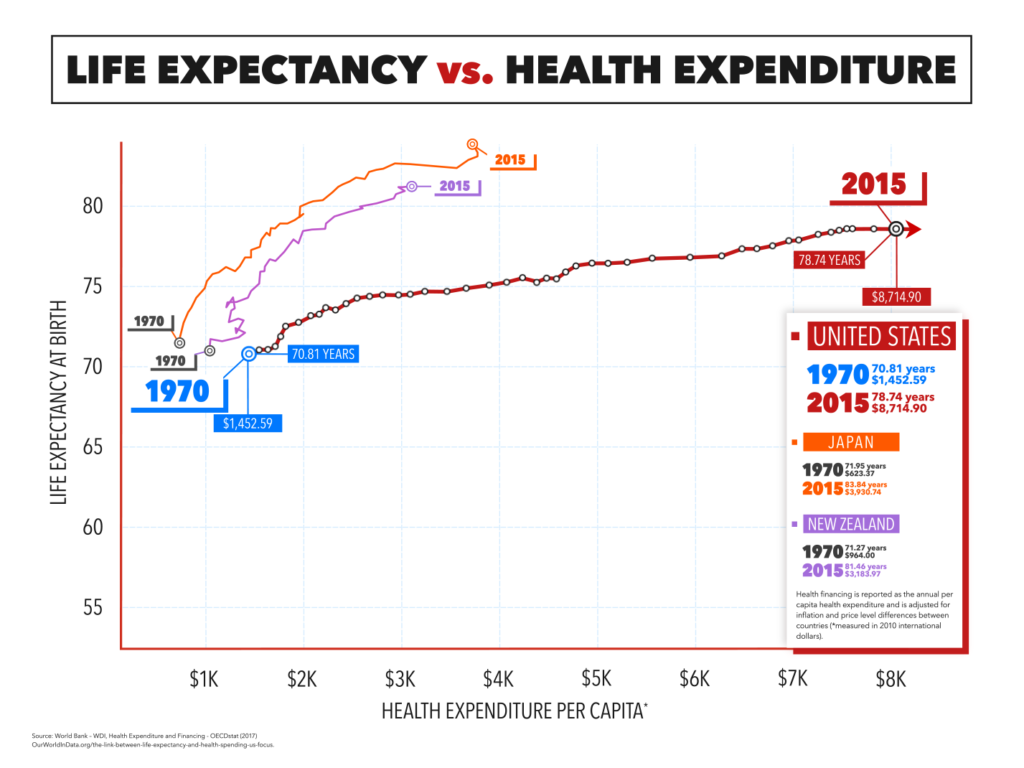The Our World in Data graph shows that increased health care spending resulted in greater life expectancy in a host of countries from 1970 to 2015. The United States stands out as the greatest spender by far, but despite health care spending in the trillions, Americans can expect to live shorter lives than citizens of countries that spend much less on health. Compare the United States with Japan: The U.S. spends more than twice as much on health care, yet Japanese people can expect to live years longer.
Compounding the problem, the United States is receiving a poor return on its investments, as additional spending is generating only modest increases in life expectancy. Through an average annual expenditure increase of 4.06 percent, the U.S. generated a 0.24 percent average annual change in life expectancy. For comparison, as seen in the full interactive graph on Our World In Data’s website, Slovenia’s 3 percent average annual spending increase produced an average annual life-expectancy change that’s almost double the U.S. number. The U.S. also experiences higher rates of child mortality and maternal mortality than other wealthy countries despite its incredible spending. The data suggests the U.S. health care system is increasingly inefficient at best and completely broken at worst.
